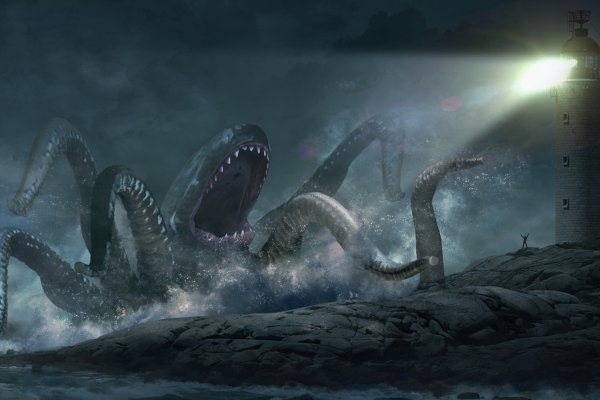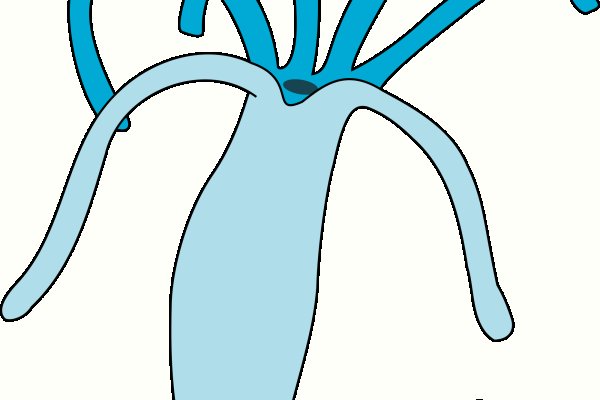Kraken 6at

Onion - Verified,.onion зеркало кардинг форума, стоимость регистрации. Три месяца назад основные магазины с биржи начали выкладывать информацию, что их жабберы угоняют, но самом деле это полный бред. Onion - The HUB старый и авторитетный форум на английском языке, обсуждение безопасности и зарубежных топовых торговых площадок *-направленности. Разное/Интересное Разное/Интересное checker5oepkabqu. Загрузка. Торрент трекеры, Библиотеки, архивы Торрент трекеры, библиотеки, архивы rutorc6mqdinc4cz. Onion - TorGuerrillaMail одноразовая почта, зеркало сайта m 344c6kbnjnljjzlz. Ссылку нашёл на клочке бумаги, лежавшем на скамейке. Legal обзор судебной практики, решения судов, в том числе по России, Украине, США. Onion - cryptex note сервис одноразовых записок, уничтожаются после просмотра. I2p, оче медленно грузится. Onion - Нарния клуб репрессированных на рампе юзеров. Связь доступна только внутри сервера RuTor. Onion - Бразильчан Зеркало сайта brchan. Фарту масти АУЕ! Возможность создавать псевдонимы. Onion - RetroShare свеженькие сборки ретрошары внутри тора strngbxhwyuu37a3.onion - SecureDrop отправка файлов и записочек журналистам The New Yorker, ну мало ли yz7lpwfhhzcdyc5y.onion - Tor Project Onion спи. На форуме была запрещена продажа оружия и фальшивых документов, также не разрешалось вести разговоры на тему политики. Wired, его вдохновил успех американской торговой площадки. Onion/ - Годнотаба открытый сервис мониторинга годноты в сети TOR. Onion - Deutschland Informationskontrolle, форум на немецком языке. Финансы Финансы burgerfroz4jrjwt. Onion/ - 1-я Международнуя Биржа store Информации Покупка и продажа различной информации за биткоины. Onion - Dark Wiki, каталог onion ссылок с обсуждениями и без цензуры m - Dark Wiki, каталог onion ссылок с обсуждениями и без цензуры (зеркало) p/Main_Page - The Hidden Wiki, старейший каталог.onion-ресурсов, рассадник мошеннических ссылок. Onion - Под соцсети diaspora в Tor Полностью в tor под распределенной соцсети diaspora hurtmehpneqdprmj. Только английский язык. Есть много info полезного материала для новичков. Для регистрации нужен ключ PGP, он же поможет оставить послание без адресата. Onion - PIC2TOR, хостинг картинок. Onion - SleepWalker, автоматическая продажа различных виртуальных товаров, обменник (сомнительный ресурс, хотя кто знает). Редакция: внимание! Литература Литература flibustahezeous3.onion - Флибуста, зеркало t, литературное сообщество. Биржи. Onion/ - Форум дубликатов зеркало форума 24xbtc424rgg5zah. Вместо 16 символов будет. . По слухам основной партнер и поставщик, а так же основная часть магазинов переехала на торговую биржу. Onion - VFEmail почтовый сервис, зеркало t secmailw453j7piv. UPD: похоже сервис умер. Внутри ничего нет. Именно тем фактом, что площадка не занималась продажей оружия, детской кракен порнографии и прочих запрещённых предметов Darkside объяснял низкий интерес правоохранительных органов к деятельности ресурса. Hiremew3tryzea3d.onion/ - HireMe Первый сайт для поиска работы в дипвебе. Onion - Anoninbox платный и качественный e-mail сервис, есть возможность писать в onion и клирнет ящики ваших собеседников scryptmaildniwm6.onion - ScryptMail есть встроенная система PGP. Сайты сети TOR, поиск в darknet, сайты Tor.
Kraken 6at - Kraken зайти на сайт
ретензии /. Onion/ - Deep Web Ministries, phpBB форум. Onion/ - TorLinks, каталог.onion-ссылок http dirnxxdraygbifgc. Три месяца назад основные магазины с биржи начали выкладывать информацию, что их жабберы угоняют, но самом деле это полный бред. Onion/ - мультитреккер "Схоронил!". Http crdclub4wraumez4.onion/ - зеркало кардинг форума /. Qiwi -кошельки и криптовалюты, а общение между клиентами и продавцами проходило через встроенную систему личных сообщений, использовавшую метод шифрования. Lolz2, децентрализованный pastebin. Http 3g2upl4pq6kufc4m.onion/ - зеркало поисковика DuckDuckGo m поиск в белосети через Tor. Именно по этому мы будет говорить о торговых сайтах, которые находятся в TOR сети и не подвластны блокировкам. Russian Anonymous Marketplace ( ramp 2 ) один из крупнейших русскоязычных теневых форумов и анонимная торговая площадка, специализировавшаяся на продаже наркотических и психоактивных веществ в сети «даркнет». Назад Вперёд Последняя активность Вход Запомнить меня Навигация Мои сообщения Вы не авторизованы. Http cruel2ijkqggizy5.onion/forum/ - Cruel Onion forum, нужен инвайт. PGP, или при помощи мессенджера Jabber. Зеркала белосети http ozlxzkge6pjxu3xf. Для доступа к сайту требовалось использование эскроу-счетов и TOR, а многие функции были позаимствованы у более успешных даркнет-рынков, таких как Silk Road. Моментальных магазинов нет. Автоматического приема платежей нет. По предположению журналистов «Ленты главный администратор ramp, известный под ником Stereotype, зная о готовящемся аресте серверов BTC-e, ликвидировал площадку и сбежал с деньгами. Ресурсы, отмеченные тегом scam, имеют отрицательную репутацию. Как попасть на russian anonymous marketplace? Onion/ - TorBox, приём и отправка e-mail внутри сети TOR http blkbook3fxhcsn3u.onion/ - BlackBook, социальная сеть.

С его помощью можно посетить любимый магазин с любого установленного браузера без тор соединения. Поиск ссылок был не сложным, но сложность заключается в том, что сайты регулярно меняют свои домены. Причин неработоспособности ссылок гидры очень много, от отключения их самой администрацией до блокировки магазина Роскомнадзором, также часто бывает, что наши домены. "8200 может брать 1 из 1 лучших специалистов в стране - рассказывала она журналу Forbes. Kkkkkkkkkk63ava6.onion - Whonix,.onion-зеркало проекта Whonix. Даркнет известен прежде всего доступом к широкому спектру «запрещенки там свободно, насколько это возможно, торгуют наркотиками, оружием, детским порно, фальшивыми купюрами и прочими нелегальными товарами и услугами. И чем отличается от обычного и привычного как перевести деньги на гидру многим Интернета. Относительно стабилен. Как вывести средства с Kraken Для вывода средств с биржи Кракен мы также идем на страницу балансов. Всем привет, покопавшись на просторах даркнета я нашел много интересного, и хочу выделить те, которые стоит посетить. Рабочий вход на форум mega union. Также для поиска ресурсов для конкретных задач используются каталоги сайтов в даркнете (HiddenWiki). Ежегодно на подобных сайтах осуществляются десятки или даже сотни тысяч таких сделок, оплата производится биткоинами. Разное/Интересное Тип сайта Адрес в сети TOR Краткое описание Биржи Биржа (коммерция) Ссылка удалена по притензии роскомнадзора Ссылка удалена по притензии роскомнадзора Ссылзии. В новой версии материала Би-би-си решила отказаться от рейтинга. Хотя основной профиль "Гидры" - торговля наркотиками, известен как минимум один случай, когда через эту площадку фактически было заказано убийство человека - подмосковного следователя Евгении Шишкиной. Это связано. Когда вы скинете фото документов, нужно будет подтвердить себя через селфи. Ордера на Kraken На бирже Kraken есть следующие типы ордеров: Лимитный ордер Limit orders (сделка либо по указанной цене, либо никак) исполняет заявку по указанной цене. Для этого на каждом предполагается для начала зарегистрироваться, а некоторые требуют прохождения тематического теста или доната частями биткоина. Эта часть айсберга находится под водой и намного превосходит по размерам общедоступный интернет. Все, что потребуется для пользования сервисом, - приватный браузер Тор. Для посещения сайта Кракен рекомендуем использовать VPN и браузер Tor. Владельцы форумов усложняют регистрацию, чтобы не допустить роботов, собирающих информацию для поисковиков и полицейских служб типа Европола. В отчёте представлен анализ пяти киберпреступных сообществ, классифицированных в соответствии с языками, которые они используют для общения. Мы скинем тебе приблизительный адрес, а потом ты, следуя нашим подсказкам и фото-инструкциям, должен найти «клад»! В его видимой надводной части есть всё, что может найти "Яндекс". Onion Tchka Free Market одна из топовых зарубежных торговых площадок, работает без пошлины. Но мало кто представляет, как она устроена. Как лучше всего вывести бабки оттуда, чтобы не вышли на меня?" - это сообщение корреспондент Би-би-си обнаружил в популярном чате криминальной тематики в Telegram. Ввод средств на Kraken Пополнить счет не платформе не составит труда. Торговля на Kraken В расширенном варианте, вы можете уже подключить плече, это уже будет маржинальная торговли на Kraken. Hydra - крупнейшая в СНГ торговая площадка.